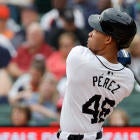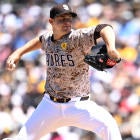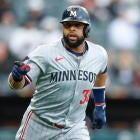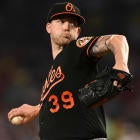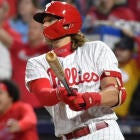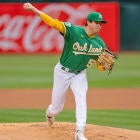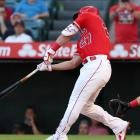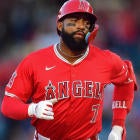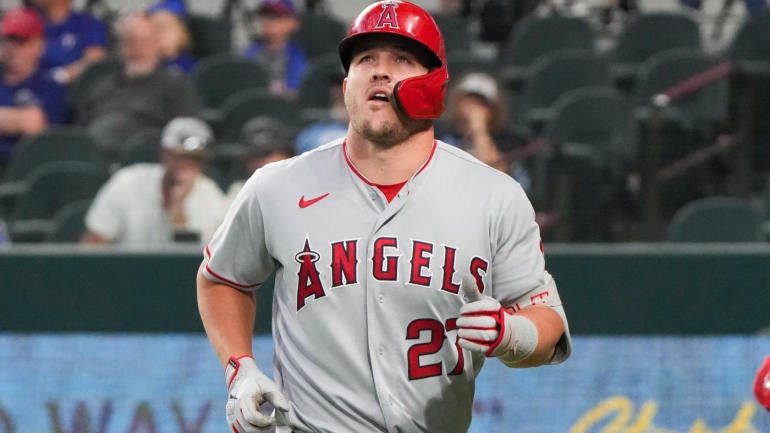
In our previous Head-to-Head points mock drafts for 2023, the biggest takeaways were the fading of starting pitchers in Rounds 1 and 2 and the renewed emphasis on position scarcity.
Those changes are pretty well ingrained by now and no longer as novel as they once seemed, so the big takeaway from our latest Head-to-Head points mock is simply this: everyone is paying attention.
Those things making headlines in spring training? They're having an impact on draft boards, at least among those with their ear to the ground. Most notably, Jordan Walker was the 100th player taken in this draft. Let me repeat that lest you skim past it: 100th overall, ahead of Christian Yelich, Dansby Swanson, Adolis Garcia and Rhys Hoskins, to name a few. It's true that with his 4-for-4, two-homer performance over the weekend, Walker's ADP in NFBC leagues climbed about 80 spots, into the top 140, but 100th overall is by far the earliest I've seen him go.
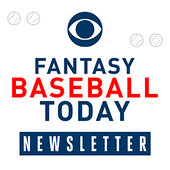
Fantasy Baseball Today Newsletter
Your Cheat Code To Fantasy Baseball
You're destined to gain an edge over your friends with advice from the award-winning FBT crew.
Thanks for signing up!
Keep an eye on your inbox.
Sorry!
There was an error processing your subscription.
If there's an occasion to gamble that big, it's in a format like this one. With so few lineup spots to fill (only nine hitters), you need impact from every starter, and with such a deep waiver wire (only 252 players rostered), the penalty for missing is low. There comes a point in the draft when the remaining hitters, while still of a reasonable quality, feel a bit redundant, and we were just about there with the Walker pick. It happened right around the point when I thought, "I'm not excited about drafting any of these players."
Deeper leagues with scarcer waiver wires are another matter because the penalty for missing on an upside play is much worse, but for this mock, it seemed like everyone got the memo that it's OK to sell out for upside. Other examples include Bryce Harper (86th overall), Hunter Brown (94th), Grayson Rodriguez (104th) and Lars Nootbaar (113rd)
Here's who all took part in the draft:
1) Jake Holland, formerly The Toss Up (@jakebaseball17)
2) Scott White, CBS Sports (@CBSScottWhite)
3) Michael Waterloo, The Athletic (@MichaelWaterloo)
4) Sean Millerick, Call to the Pen (@miasportsminute)
5) George Kurtz, Sportsgrid (@GeorgeKurtz)
6) Matt Angelini, Fantasy Baseball Academy (@MatttAngelini)
7) JR Fenton, TGFBI participant (@JohnRussell215)
8) Tim Kanak, Fantasy Aceball Podcast (@fantasyaceball)
9) Nick Fox, NBC Sports (@CT_FOX)
10) Chris Mitchell, FantasyData (@CJMitch73)
11) Terry Gentzler, lucky reader who got to join in
12) R.J. White, CBS Sports (@rjwhite1)
And here are five more takeaways:
- Mike Trout may seem like a surprising choice at fifth overall, but he's best suited for this format, which values plate discipline and devalues stolen bases. I'd still take Ronald Acuna and Julio Rodriguez over him, if only because of the injury risk, but Trout's 3.64 points per game last year ranked behind only Aaron Judge, Yordan Alvarez and Mookie Betts among outfielders.
- Another curious pick was Nolan Arenado (19th overall) over Austin Riley (22nd), but Arenado's low strikeout rate made all the difference last year. He outscored not only Riley on a per-game basis (3.40 to 3.16) but also Rafael Devers (3.30). I still prefer Devers and Riley to Arenado, believing the latter came closer to maxing out his potential last year than did the former two, but there's an argument to be made for Arenado instead, at least in this scoring format.
- Between taking Ohtani late in Round 2 and Paul Goldschmidt early in Round 3, I didn't stick to my usual plan of picking outfielder in Round 1, a third baseman in Round 2 and a second baseman in Round 3. Of course, it kind of went out the window when I took Jose Ramirez in Round 1 (not that I would have taken anyone else second overall), but the point is that there is such a thing as looking a gift horse in the mouth. If you're too rigid in your thinking, that's exactly what can happen. I wasn't going to pass up two first round-caliber bats (Goldschmidt last year averaged more points per game (3.78) than even Ramirez (3.77), after all) just so that I didn't have to sweat second base later.
- Second base may not even be worth sweating when there isn't a third middle infield spot to fill. Beyond Jose Altuve and, to a lesser extent, Marcus Semien, Ozzie Albies and Jazz Chisholm, it's a position of incredible redundancy in this format. You could argue I waited too long, passing up the chance to grab Andres Gimenez in Round 12 and ultimately settling for Brandon Drury in Round 20, but Gimenez, for as good as he was, averaged just 2.77 points per game last year. That's compared to 2.74 for Jeff McNeil, 2.73 for Jorge Polanco and Jake Cronenworth, and 2.99 for Drury himself.
- Other players who, like Gimenez, slid because of too many redundancies at the same position include Dansby Swanson (119th overall), William Contreras (157th) and Nate Lowe (160th).














